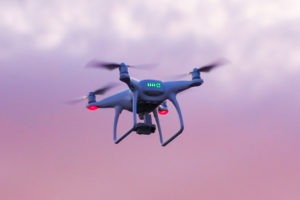July, August and into early September across Europe are the months for festivals, concerts, open days and other events that make the most of the hopefully good weather, and 2018 hasn’t disappointed! In addition, August sees the start of the soccer season in the UK and across Europe.
Luckily 2018 hasn’t experienced the terror that tore across mainland Europe and the UK in 2016 – 2017 with vehicle, knife and bomb attacks happening in Nice, London Bridge, Westminster, Manchester and Barcelona. These are just a few of the places left reeling from a wave of extremism targeting people going about their normal lives and enjoying themselves. The apparent crudeness of the weaponry used belies the sophistication of many of the attacks.
The evolving threat landscape
2018 has been successful for the security services with a number of attacks being stopped, but the UK Counter Terror Police continue to remind everyone that they have approximately 600 active investigations going on involving over 3000 people of immediate concern, and another 20,000 on their radar!
Despite the calm, 2018 will be remembered for a new type of attack, with the first use of a deadly, military-grade nerve agent on the streets of the small, sleepy English city, Salisbury. The nerve agent Novichok was used in an assassination attempt on a Russian former intelligence officer, Sergi Skripal and his daughter Yulia, in March.
Unfortunately, in addition to a police officer who was treated in intensive care and two paramedics who suffered minor symptoms after the initial attack, two innocent people, Dawn Sturgess and Charlie Rowley happened across some of the detritus from that attack and sadly, Dawn died. That’s several casualties and one death from an undetectable, odourless, colourless substance deposited on the streets of England in an attack orchestrated by Russia, according to the UK Government.
1200 police officers were deployed to cordon off suspected contaminated sites and are being slowly replaced by civilian security guards. This incident, that could be from the pages of a John Le Carré novel, is now spurring greater public-private security cooperation.
New technology, new risks

On 4 August, the Venezuelan President, Nicolas Maduro, narrowly avoided an apparent assassination attempt after two explosive packed drones reportedly flew toward him while he was making a speech at an event in Caracas.
The potential use of drones against crowded places is nothing new; during the FIFA World Cup in Russia an ISIS propaganda video was released in which the terrorist group claimed that they would launch attacks with drone-carried bombs.
This possibility was highlighted as a threat against the London Olympics as far back as 2012, and ISIS have had a campaign of posting drone threats and boasting of their use in Syria and Iraq for a few years now. While the follow-through hasn’t been there, the potential for large numbers of casualties resulting from the panic caused by a drone attack in a crowded event remains a very real risk.
Last year, the EU Counterterrorism coordinator, Gilles de Kerchove, told a conference at the Royal United Services Institute that terrorist groups such as al-Qaeda and ISIS will soon turn to constructing biological weapons in their own homes and warned that terrorists could use drones to spread such material. This year, we have seen arrests in Germany linked to a plot to use the biotoxin ricin, in a terror attack. The purity and weaponised form of the ricin recovered shocked the German security agencies.
When asked about emerging threats, and in particular Novichok, Fraser Kennedy, Director of Mitigation and Training with London-based Ultimate Security, said, “a clear and concise overview of how to identify the effects of a nerve agent at the earliest opportunity would be warmly welcomed. Coupled with this is what to do in such an event to help protect oneself and others, and I think we would have a very useful training resource.” He went on to mention that when looking at new threats, “it’s important not to scaremonger” – sound advice.
Preparing the public
The conclusion we can draw from the incidents that have occurred over a relatively short period of time is that the amount of planning and preparation needed to protect today’s events and crowded places is enormous.
Equally, the police in the UK continue to develop campaigns to raise public awareness and the latest just announced for the soccer season is “Know the Game Plan.” While there is no specific threat to football grounds, the project is part of a wider police plan to work more closely with different sectors such as retail, hospitality and entertainment to help protect the public. Nearly a quarter of a million sports event stewards have been issued with a short guide giving key advice on how to help protect crowds of spectators.
The threat landscape has changed hugely, and I haven’t touched on the cyber threat to the personal data of those registered or ticketed to attend events. The complexity of current threats has taken the security and guarding role to a new level and it remains as challenging as it is daunting. It’s only a matter of time before one of these novel attack methods is used against a crowded place. To defeat the attack, everyone involved in the security business has to be successful all of the time – terrorists only have to be successful once.



